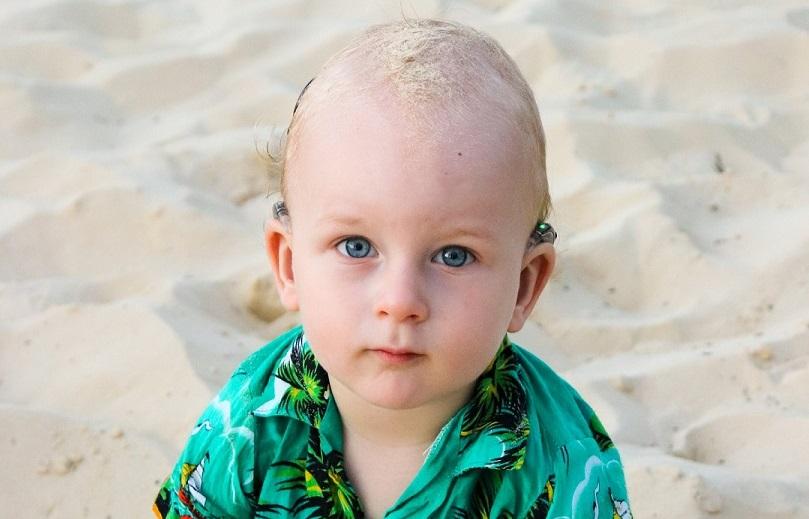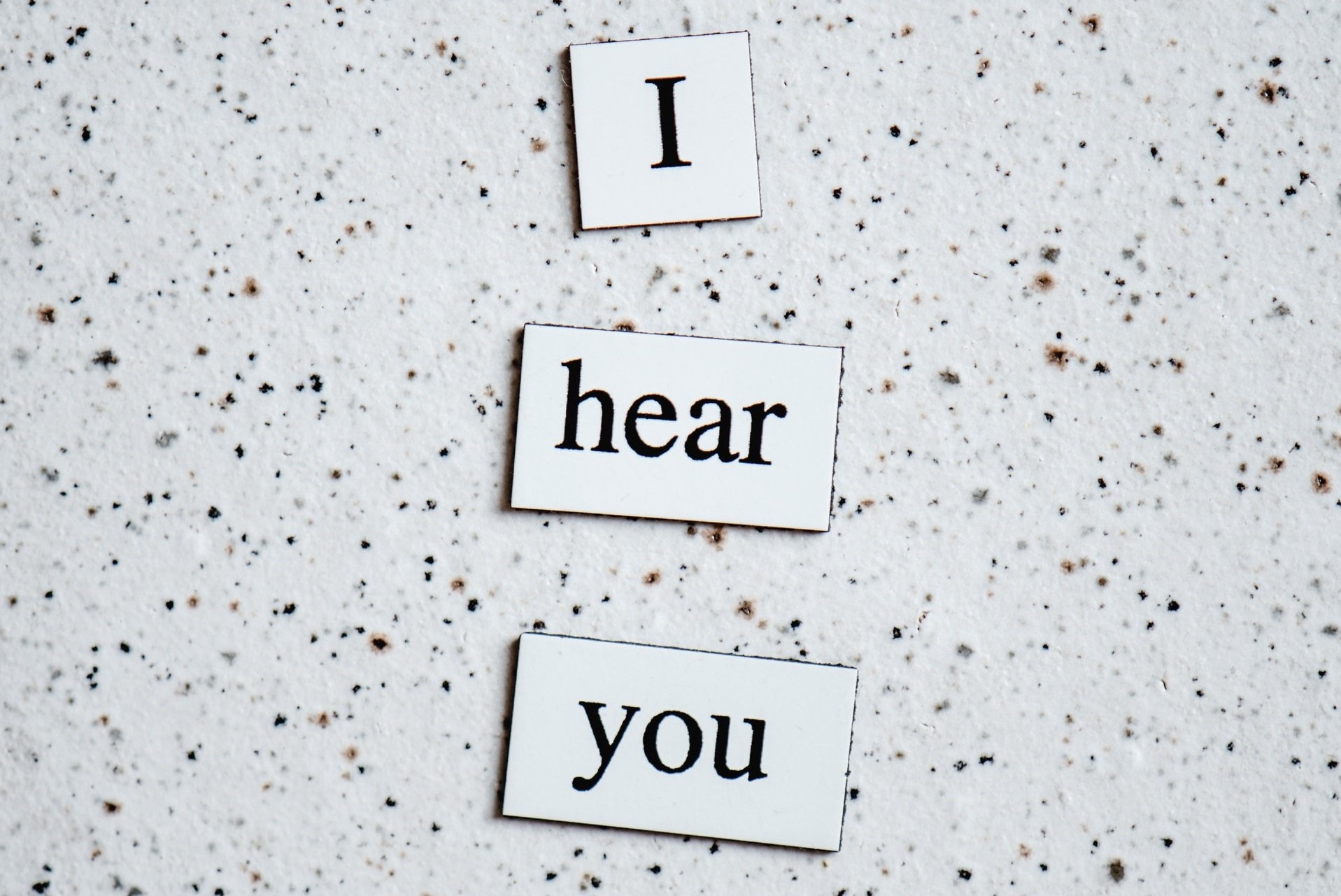
Congenital deafness or hearing loss is hearing loss that is present at birth. This hearing loss can either be manifested at birth or develop later in life, usually during childhood. Relatively rare, congenital hearing loss occurs in approximately one out of every 1,000 to 2,000 births. Approximately 50 percent of congenital hearing loss cases are due to genetics, 25 percent are due to acquired, non-hereditary causes at birth, and 25 percent of cases have unknown causes.
Contents
Acquired Causes of Congenital Deafness
Some cases of congenital hearing loss arise due to non-hereditary reasons that are present during pregnancy or at birth. These reasons can include:
- Viral infections, such as toxoplasmosis, rubella, syphilis, cytomegalovirus, or the herpes simplex virus
- Premature birth
- Low birth weight
- Birth injuries
- Drug or alcohol use while pregnant
- Use of teratogenic drugs, such as thalidomide, reticonic, or quinine, while pregnant, which can interfere with fetal development
- Jaundice
- Maternal medical conditions while pregnant, such as diabetes or high blood pressure
- Anoxia, in which the baby is deprived of oxygen
Genetic Causes of Congenital Deafness
The majority of congenital deafness or hearing loss cases are due to genetic or hereditary reasons. This hearing loss can be present at birth or it may develop later. Both parents may have healthy hearing yet carry recessive genes that cause issues or genetic syndromes in which hearing loss is a symptom. Some genetic syndromes that manifest in congenital deafness or hearing loss include:
- Down syndrome – abnormal fetal development sometimes results in a narrowing of the ear canals and makes individuals prone to ear infections, both of which can cause hearing loss.
- Usher syndrome – this is a rare genetic disorder that causes deafness due to a reduction in the function of the inner ear and auditory nerve which results in sensorineural hearing loss; it’s often accompanied by retinitis pigmentosa, which causes vision loss.
- Treacher Collins syndrome – this is another rare genetic disorder that is characterized by malformation of the face and skull during development of the fetus. It affects hearing in the individuals because the outer ear, ear canal, and middle ear often do not develop correctly which results in varying degrees of hearing loss. Microtia is often present, which is a small misshapen outer ear, or a completely missing outer ear.
- Crouzon syndrome – this rare disorder is a form of craniosynostosis, in which the sutures between the bones of the skull fuse too early during development. This premature fusion affects the development of the skull and head and can prevent the normal transmission of sound, resulting in sensorineural hearing loss.
- Alport syndrome – this genetic condition causes kidney disease, eye abnormalities, and hearing loss in affected individuals. The hearing loss is due to malformations in the inner ear which usually present themselves in late childhood or early adolescence.
- Waardenburg syndrome – this genetic condition is characterized by pigmentation abnormalities in the hair, skin, and eyes. Although most individuals with this genetic condition have normal hearing, some individuals experience hearing loss from birth. This hearing loss may be moderate to profound and may affect one or both ears.
How is Congenital Deafness Treated?
Treatment for congenital deafness or hearing loss is often determined after weighing several factors including the age of the child, the child’s developmental level, the degrees of hearing loss, and cost of treatment. It is recommended that treatment for congenital hearing loss start before the age of six months. At this age, children are beginning to develop communication skills. In order for the child to develop at a similar level to normal hearing children, aids to hearing are crucial.
Many causes of congenital hearing loss or deafness are due to incorrectly formed inner or outer ears during fetal development. For many of these malformations that are causing congenital hearing loss, surgery may be an option to correct some of these problems. An otolaryngologist (ear, nose, and throat doctor) can often perform corrective surgery to restore some or all hearing to a child suffering from these hearing issues.
Hearing Aid Help
For some types of congenital hearing loss, hearing aids can be used to improve hearing. Hearing aids can be fitted at a very early age, and the younger the better is recommended to ensure the proper development of speech perception, speech production, and spoken language skills. Behind the ear (BTE) style hearing aids are recommended because there is less of a swallowing risk compared to smaller styles like in-the-ear, and BTE hearing aids are easier to adjust and fit as the child grows.
Bilateral hearing aids are recommended to facilitate binaural hearing, which allows the child to localize sound and better understand speech in noisy environments. Audiologist appointments will be much more frequent than an adults, usually every three months, in order to adjust and fit hearing aids to the child’s rapidly growing ear canal.
Cochlear Implants for Congenital Deafness
For children whose hearing loss is so severe that hearing aids do not help, cochlear implants may help improve their hearing. Cochlear implants are used when problems with the ear canal, middle ear, or inner ear, prevent that normal sound transmission pathway from working entirely. Cochlear implants bypass the normal pathway completely and deliver sound directly to the cochlea, which then transmits sound information to the auditory nerve.
Cochlear implants can help severely hearing impaired or deaf children develop language skills, including language comprehension and expression. For children with a damaged or nonfunctional cochlea or auditory nerve, an auditory brainstem implant may help provide some level of hearing. Auditory brainstem implants bypass the inner ear and auditory nerve and instead directly stimulate the hearing pathways in the brain.
Whether a cochlear implant or auditory brainstem implant is used, It is recommended that children be implanted as early as possible to maximize auditory rehabilitation.
The information in this guide has been written using the following reliable sources:
https://rarediseases.org/rare-diseases/usher-syndrome/
https://www.californiaearinstitute.com/ear-disorders-treacher-collins-syndrome-bay-area.php
https://medlineplus.gov/genetics/condition/alport-syndrome/
https://rarediseases.org/rare-diseases/crouzon-syndrome/
https://medlineplus.gov/genetics/condition/waardenburg-syndrome/
http://www.raisingdeafkids.org/hearingloss/causes/
https://www.ncbi.nlm.nih.gov/pmc/articles/PMC5222593/
https://www.ncbi.nlm.nih.gov/pmc/articles/PMC5675031/
https://www.dizziness-and-balance.com/disorders/hearing/cong_hearing.html
https://www.asha.org/public/hearing/congenital-hearing-loss/
https://www.hiddenhearing.co.uk/hearing-information/hearing-loss/congenital-hearing-loss
https://www.cdc.gov/ncbddd/hearingloss/treatment.html








